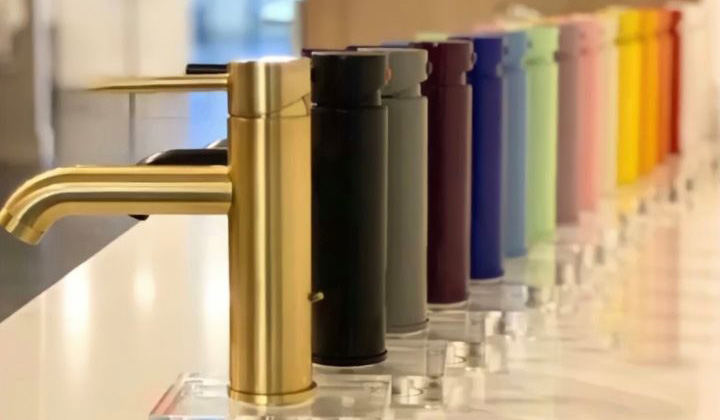How To Install Kitchen Countertops
Installing kitchen countertops might sound like a challenging job, but with the right guidance, you can transform your kitchen with confidence. Whether you’re upgrading for aesthetics or functionality, this step-by-step guide will walk you through everything from selecting materials to sealing your new surface. By following these instructions carefully, you’ll achieve professional-quality results and a stunning kitchen centerpiece.
Choosing The Right Countertop Material
Before you jump into installation, selecting the right countertop material is crucial. Your choice impacts durability, maintenance, cost, and the overall look of your kitchen. Popular options include:
- Granite: Known for durability and unique patterns, granite resists scratches and heat but requires periodic sealing.
- Quartz: Engineered for low maintenance with consistent coloring, quartz is non-porous and highly durable.
- Laminate: Budget-friendly and available in countless styles, but more prone to damage from heat and cuts.
- Butcher Block: Offers warmth and natural beauty but needs regular oiling to prevent drying and staining.
Consider your kitchen’s style, your lifestyle, and maintenance willingness when picking your material. For instance, if you love cooking and heavy use, granite or quartz might be the best fit. If budget is a priority and you want a fresh look, laminate is a good option.
Measuring And Preparing Your Kitchen Space
Accurate measurement is the backbone of a successful countertop installation. Start by clearing your kitchen workspace completely for unobstructed access.
Steps to Measure:
- Measure the length and width of your existing countertops carefully using a tape measure.
- Note any cutouts for sinks or appliances.
- Double-check your numbers to avoid costly mistakes.
Also, ensure cabinets underneath are level and secure. You can check this with a spirit level. Address any unevenness to support your new countertops properly. Preparing your space thoroughly helps prevent surprises during installation.
Gathering Necessary Tools And Materials
Having the right tools at hand is essential to make the process smooth and efficient. Here’s what you’ll generally need:
- Measuring tape and pencil
- Level
- Power drill and screwdriver bits
- Clamps
- Silicone adhesive or construction adhesive
- Jigsaw or circular saw with appropriate blades (for cutouts)
- Safety gear: gloves, goggles, and dust mask
Also, you’ll need supports like shims to level your countertops if cabinets aren’t perfectly even. Preparing all tools beforehand means you won’t have to stop midway looking for essentials.
Removing Old Countertops Safely
Before installing your new countertops, you must safely remove the old ones:
- Disconnect plumbing fixtures linked to sinks and appliances.
- Remove the sink and take out appliances embedded in the countertop.
- Use a utility knife to cut through any caulking sealing the old countertops to walls or cabinets.
- Unscrew brackets or fasteners securing the countertop.
- Carefully pry the countertop away. This might require a helper, especially for heavier materials.
Take precautions to protect your cabinets and floors during removal. Also, dispose of the old materials responsibly.
Installing The New Countertops
With the space prepared and your new countertops ready, it’s time to install:
- Position the countertop on your cabinets and check for fit. Adjust with shims if necessary to ensure a level surface.
- Mark any necessary cutouts for sinks or appliances, then carefully cut using a jigsaw.
- Secure the countertop to cabinets using brackets or screws according to your material instructions.
- Use construction adhesive underneath for additional stability.
Pay close attention to the alignment and level throughout. This step sets the foundation for a flawless finish, so take your time.
Sealing And Finishing Touches
Sealing your countertops protects them from stains and damage and enhances their appearance:
- Apply silicone caulk around edges where the countertop meets the wall to prevent water seepage.
- For stone surfaces like granite or quartz, apply a sealant recommended by the manufacturer to maintain stain resistance.
- Reinstall sinks and plumbing fixtures carefully.
- Clean the surface thoroughly to remove dust or adhesive residue.
These finishing touches not only improve durability but also give your kitchen a polished, professional look.
Maintaining Your Kitchen Countertops
Your new countertops will stay beautiful and functional with proper care:
- Clean spills immediately using a mild detergent and soft cloth.
- Avoid placing hot pots directly on surfaces to prevent burns or discoloration.
- Re-seal stone surfaces every 6-12 months depending on usage.
- Use cutting boards to avoid scratches, even on durable countertops.
- Regularly check for grout or sealant deterioration and repair as needed.
Consistent maintenance preserves your countertop investment and keeps your kitchen looking fresh for years.
Conclusion
Installing your own kitchen countertops can feel intimidating, but by carefully choosing materials, measuring accurately, and following proper installation steps, you’ll end up with a stunning and durable surface. Remember, preparation and patience are your best allies. With the right tools and a methodical approach, this project can elevate your kitchen’s style and functionality, making it a space you truly enjoy.

